While I wouldn’t say that it went viral, my piece last month on the tax assessments for John Calipari’s lexington home sure felt that way to me. The subject matter—former University of Kentucky basketball coach & property tax increases all wrapped together in one article—was perhaps an easy mark.
Nonetheless, there is nothing more validating to a writer than to have their work circulated and discussed. After years in the blackballed news desert, it’s nice to have reader commentary. Here is some of what you said. I want to return the compliment by addressing some of the comments that appeared when the article was posted to the Lexington subReddit, where it generated 64 comments and 65 upvotes.
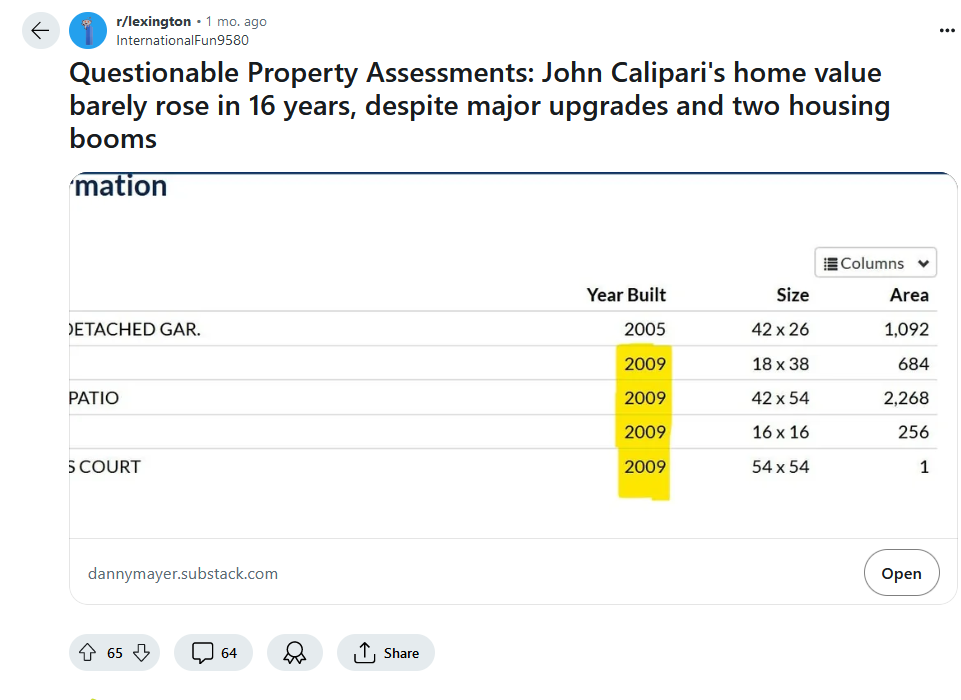
Comments fell generally into two different groups. The first was the nothing to see here grouping. The second was the oligarchs are offensive grouping. bluegrassman provides a good general summation of both camps:
This is a great read. To play devils advocate, do houses in the $2 million+ range follow the same trends as normal housing? Feels like the market for those would be less volatile since the rich stay rich.
If there truly is shadiness going down, it just further deepens my belief that to be rich you have to be a psychopath. It still shocks me that with so much money, people do whatever they can to avoid paying their fair share. They never have enough.
bluegrassman
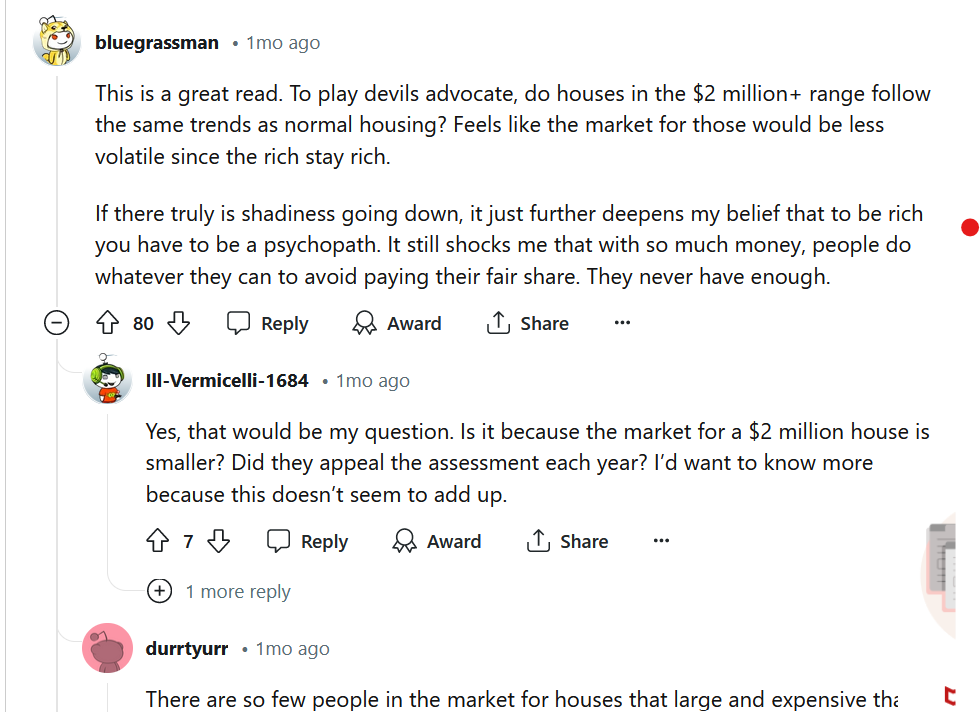
First, thanks bluegrassman! Good observations and questions. Your view about the Calipari assessment as evidence of the rich avoiding “paying their fair share” was shared by many commentators. Here’s SuperLomi 85:
Fair share isn’t about quantity, it’s about proportion.
If my home is raising 5-10% a year, but their’s, with improvements, is static they aren’t paying their fair share of the value the home should be assessed at.
SuperLomi 85
Since not paying their fair share was a perspective that my article generally shared, I’ll focus on bluegrassman’s good question of whether “houses in the $2 million+ range follow the same trends as normal housing.”
This general issue was raised by other commenters broadly falling into the nothing to see here camp. Corporate non-person wrote
My guess is that high value property changes hands less often. Typical properties get a recorded value on sale. High value property have less comps, and less sells. In addition, the owners of high value properties are more likely to protest assessments because: a) they have the time, and; b) they have the incentive. A combination of all of the above result in lower valuations.
Corporate non-person
heleghir held the same no-big-deal view:
Same reason every other property that is vastly higher than the market around them didnt increase much.
The market is different at the extremes.
Thats it. Thats the whole thing. There isnt demand for a 2m property in lexington to drive its price up with the rest of the market. There is not comps (which the PVA uses to see the local market and assess values) to compare it to. A bunch of properties worth less than half of it sell for 20% higher? Doesnt mean it is also 20% higher since they arent comparable properties.
heleghir
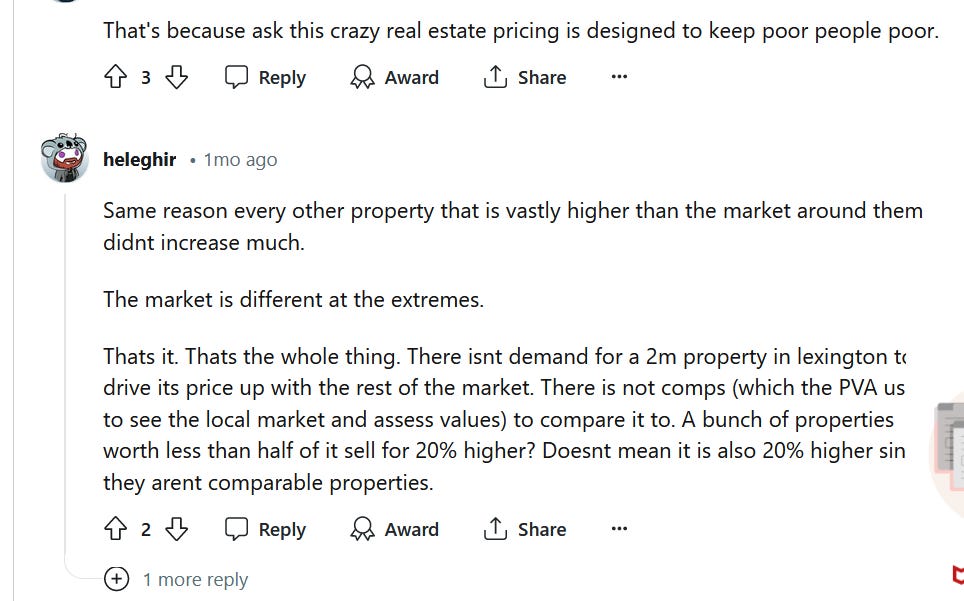
I think these are good questions and while there is no 100% right viewpoint, I am going to disagree in two general ways.
The first is philosophically. My reporting showed that the Calipari 1.2 acre homestead experienced a 15-year decline on its assessed tax value between 2008 and 2023.

Even if this is simply a matter of the slow-grinding wheels of written or unwritten policy—in other words, not shady but routine— it is absolutely a newsworthy story: wealthy household(s) get sheltered from the negative externalities of Lexington’s otherwise decade of local tax growth.
Since Calipari’s arrival in 2009, the city has committed over a billion dollars in subsidies and direct stimulus in order to make a high-end downtown for wealthy residents and tourists to enjoy. In large measure, these investments were made to spur on the horse industry, home to the city’s largest demographic of resident millionaires—class compadres to the Calipari’s. (Remember the $300 million World Equestrian Games bid to re-brand Lexington from “Thoroughbred Capital” to “horse capital” of the world?)
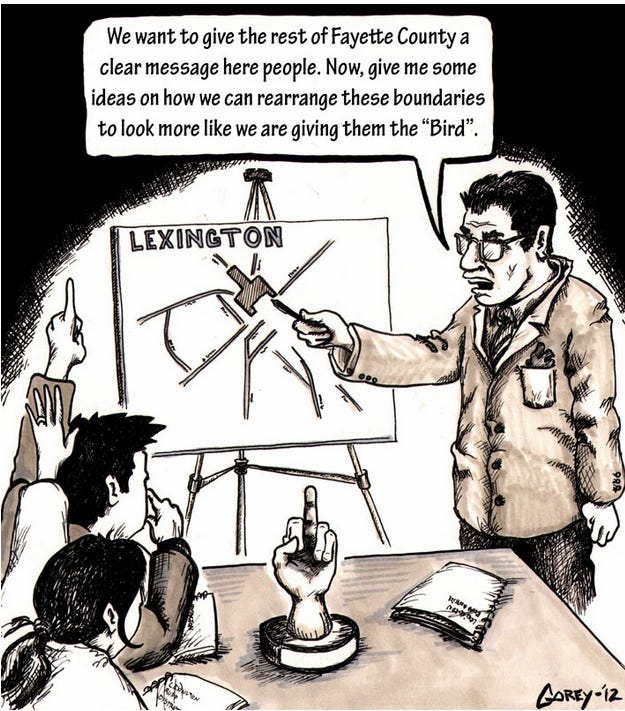
But city investments were also made to keep the UK boys basketball team competitive—to remain the Gold Standard of college boys basketball, as the millionaire Calipari used to say—and to help keep UK competitive generally as a research/medical institution. Even if it is the case that, oh yeah by the way, we probably shouldn’t expect Lexington’s wealthier households to experience much if any property value increases from the past decade of city investments targeted directed to wealthy households, that in itself is a newsworthy story.
Other skeptical commenters noted that Calipari’s homestead was not the only one to experience stagnant tax assessments. _TomatoSandwich_ stated
The fair cash value for my normal person house in Lexington did not change from 2007 to 2021. Not saying this justifies anything, only that it seems this is not just for million dollar homes. We also made improvements and upgrades during that time, albeit on a much smaller scale than Cal.
_TomatoSandwich_
nocommenting33 concurred in a different comment thread:
it actually does add up if you look at PVA all over town. the exact same happened to houses of all sizes and values and neighborhoods
nocommenting33
I agree with these observations. Homes of all sizes in numerous neighborhoods experienced over a decade of stagnant assessments.
Property assessment is an inexact, speculative, science. In order to assess whether a property is over- or under-valued (or just about right), we have to await price discovery, the actual amount a purchaser willingly pays for the house. The Calipari home has now been on the market for nearly 2 months, with several sites now listing the house as “off the market.” It does not look like the Calipari household will sell for the $4 million amount that the Calipari realtors had assessed it for. Meanwhile, the 2024 tax assessment stands at around $2.5 million for both parcels of the 1.2 acre estate.
But here is my second general disagreement with the nothing to see here camp. I still think Calipari’s house is under-assessed. I think it is under-assessed because of who he is in the city and where he is located in the city. In a city that wants to act like a town, connections and location do matter.
The specifics of Lexington growth over the past two decades—little new housing construction in the private marked combined with massive and subsidized livability projects both inside the urban core and surrounding Lexington’s educational/medical complex—should have resulted in an increased assessment on Calipari’s land value. It should have done the same for a lot of other variously under-assessed households and neighborhoods that benefited from the city’s political desire to become “world class.”
General surveys of the county and nation back this up. Several Redditers suggested that the 2007-2012 Great Recession was the cause for the Calipari’s stagnant home assessments. In proposing the nothing to see here claim, nocommenting33 noted
Hard to remember, but home prices were relatively stagnant for quite some time. And actually, values dropped post 2009 but these people were not reassessed at a lower value, as they arguably should have been.
nocommenting33
Houses are like snowflakes, all unique. But the general trends do not back up nocommenting33. Nationally, the housing recession began in 2006, bottomed in 2009, and began recovery in mid 2012. The Calipari’s bought in 2009—their price discovery for their Lexington estate was established at or near the bottom of the housing market, a fact reflected in the lower tax assessment the home received coincident with their 2009 purchase.
This means that the entirety of the Calipari’s home ownership in Lexington overlapped with the twinned post-Recession and Covid housing bubbles, when prices were rising meteorically from the bottom at which they purchased. Here is a chart from CoreLogic. It would be exceptional indeed were the Calipari household missing out on this exceptional trough-to-peak price inflation.
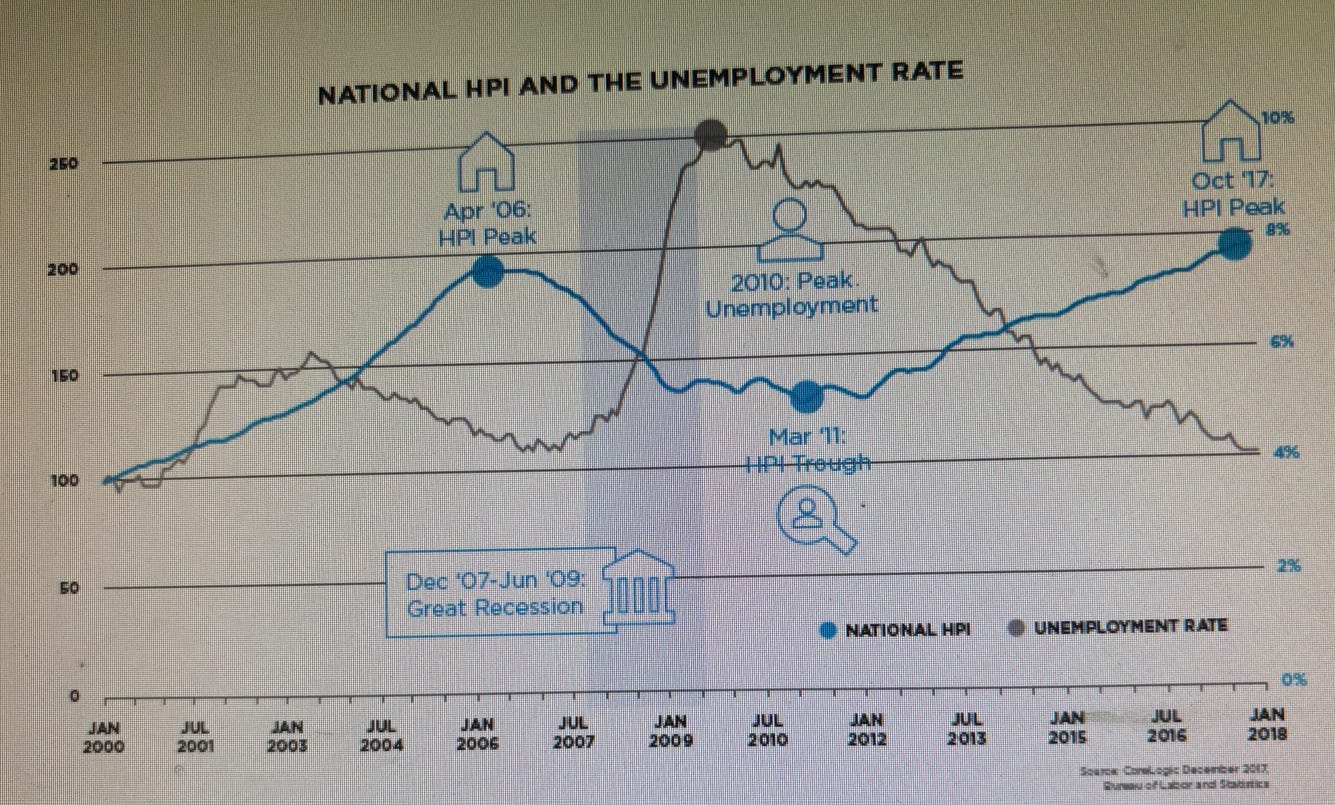
Things are even more clear when you look at Fayette County, which generally held its land value during the Great Recession years. Not only did Fayette County home values not plummet relative to the rest of the United States, but so too did property values rise (in part from so little home construction). And again, from the article, here is PVA David ONeill’s own chart showing the county’s average property values rising from 2017-2022.
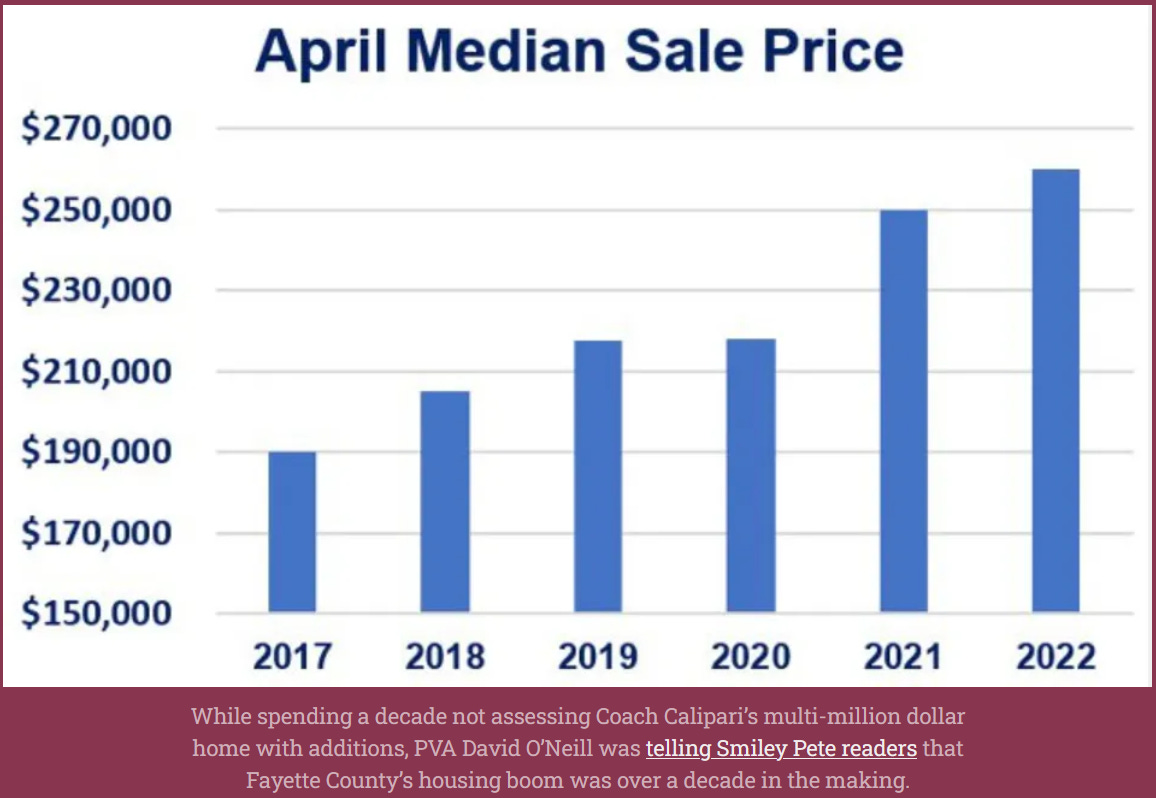
If you are familiar with Lexington, you also know that the John Calipari 1.2 acre homestead sits in a fashionable section of town: set back, it is true, on a major residential-lined arterial, but inside New Circle, equi-distant to UK and downtown, and sandwiched between the Chevy Chase and Ashland neighborhoods behind it, and, across the street, the Fairway and Kenwick neighborhoods. As inner-ring suburbs strung along the city’s oldest residential corridor, all of these neighborhoods experienced rapid growth in home re-sale values across UK’s recent boom years.
These under-assessments are not immaterial. I am working on a future article that will go into this in a bit more depth, but property tax assessments are mostly a zero sum game. The city and other taxing authorities are pushed to maintain the same annual amount of assessed tax value (the levy). If John Calipari’s home is under-assessed by $500,000, this provides room under the levy for other homes to get upwardly-assessed the same amount. (I’m simplifying here.) Theoretically, a $500,000 Calipari homestead under-assessment provides space under the levy for 10 homes formerly assessed at $250,000 to receive $50,000 increases (20%) in their assessed value.
Subscribe now to Shatty Town!, the North of Center pre-print publication
Calipari’s two lots
A last bit of clarification. Redditer oldkentuckyhome wrote
With all the research this person did you would think they would have found that the pool, pool house, tennis courts, etc. are a completely separate parcel worth $425000.
oldkentuckyhome
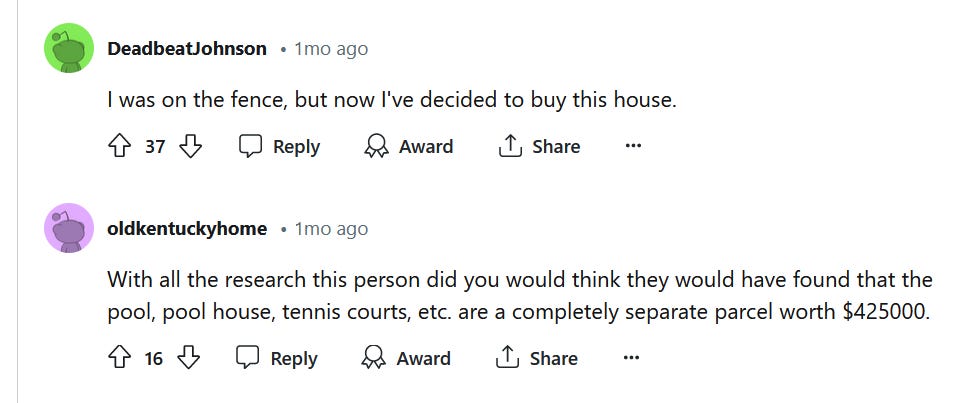
In order to simplify, my piece only referenced a single John Calipari home assessment, for the rougly 0.6 acre lot upon which his 9,500 square foot home sits. As oldkentuckyhome notes, the Calipari’s also purchased an adjoining 0.6 acre lot, for a total estate size of 1.2 acres.
I have not toured the Calipari estate, so I am unable to confirm where the Calipari’s placed the pool, pool house, and tennis courts that they had built after purchasing the home. However, the Fayette County tax assessment documents lists these amenities as additions to the main estate parcel that was purchased for $1.875 million in 2009. The Fayette County assessment on this lot actually goes up in 2010 as a result of the pool, pool house, tennis court construction.
The adjoining parcel referred to by oldkentuckyhome was also purchased by the Calipari’s in 2008 for $425,000, for a total 2008 home purchase price of $2.3 million for both lots. In the Fayette County documents, this parcel does not list any development on it for the duration of the Calipari ownership.
In 16 years, from 2008-2024, this .6 acres of prime, in-town, developable, Calipari land was never re-assessed. It remained assessed by the Fayette County PVA at $425,000. If you feel like you have heard for years about how valuable developable land is in Lexington—ya’ know, all that Urban Service Boundary talk—well, you’re right, you have heard a lot of talke about that.
But for some strange reason, that pent up consumer demand never resulted in an increased tax assessment for the Calipari’s, who were located in one of the city’s hottest of corridors.

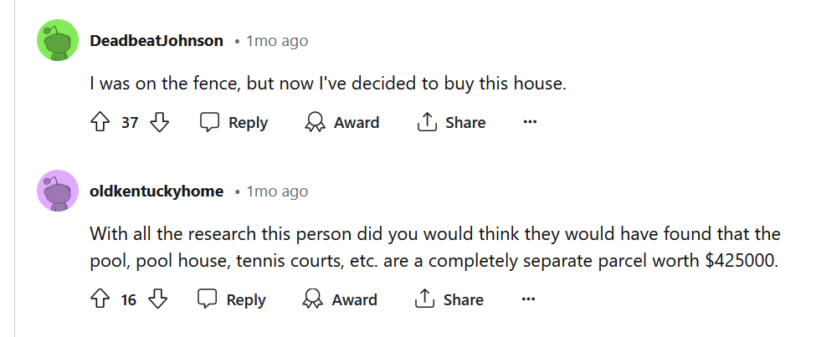

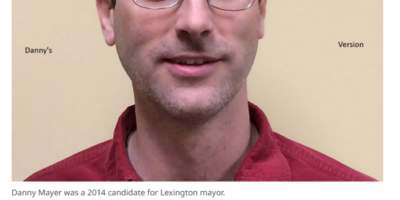
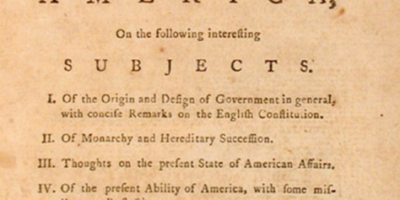
Leave a Reply